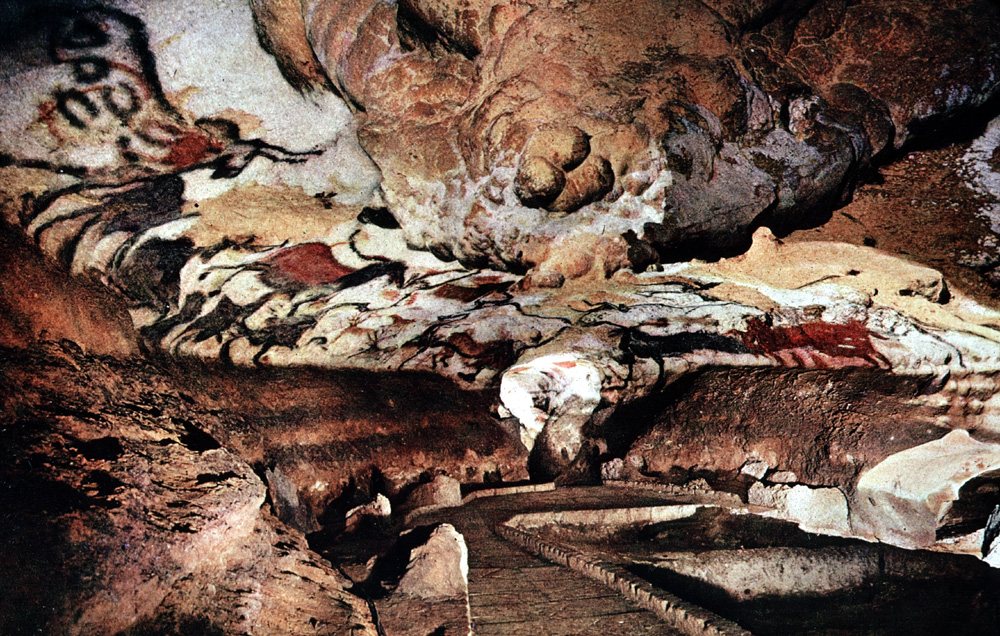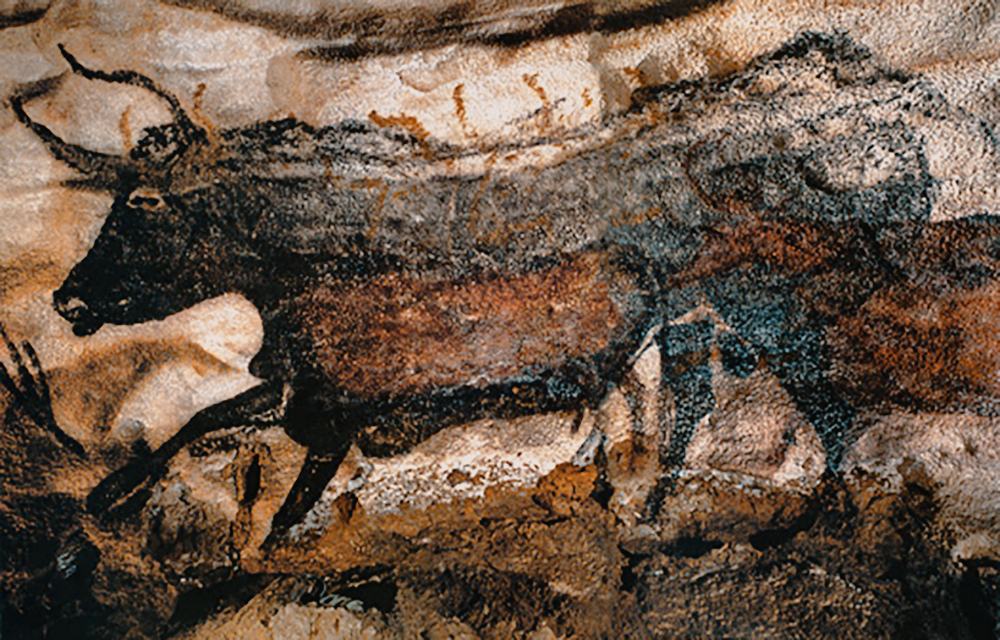Look at this cup. LOOK AT IT.

Pretty neat huh? This is a kylix, a Greek drinking cup (460 BCE) crafted with meticulous skill and dedication. Because pottery is mundane, our ancestors often depicted everyday scenes when decorating such containers. We can see that this specimen portrays an instructor with his two pupils in some sort of class; simple enough right? Many wouldn’t give this image a passing glance, but I’m fascinated by education and feel this kylix has a lot to say. Let’s dive in!
What does it say
about ancient Greek culture that purely functional objects, such as vases and
cups, were decorated so carefully and with such attention to detail?
Would it be too lazy to attribute it to a superior work
ethic and pride in one’s creation? Perhaps not, but that must only be a part of
it. I previously discussed during my Lascaux blog how art has long been felt to
hold almost magical qualities and its use was generally more practical than
“artistic.” In the same way we hesitate to stab a picture of our loved ones, we
feel a depiction’s integrity can power the object it’s representing. I doubt many
classical Greeks still consciously believed this to be the case, but the worry
may still manifest itself in art, and pottery would have been a prime outlet.
The artist here wanted the pottery to reinforce the utilitarian use it would be
serving, so it was imperative that the image came out clear, correct, and
beautiful in its representation. This would fall in line with the treatment of
similar creations in other advanced cultures.
But is there a purely Greek touch here? I think so. I’ve seen a good amount of art from different cultures up to the 5th century. In all of them the general tone is of heroism, military conquest, divine favors, etc. Rarely do I see scenes from everyday life on their own. Egypt comes close, but a picture of students and master would be different; the master much more old and wise, as if to stress tradition rather than education. Only in Greece can a classroom consist of only a few bodies, of equal age, of humble gestures. It is the act of education, of humanity at its focus, which makes Greece unique.
But is there a purely Greek touch here? I think so. I’ve seen a good amount of art from different cultures up to the 5th century. In all of them the general tone is of heroism, military conquest, divine favors, etc. Rarely do I see scenes from everyday life on their own. Egypt comes close, but a picture of students and master would be different; the master much more old and wise, as if to stress tradition rather than education. Only in Greece can a classroom consist of only a few bodies, of equal age, of humble gestures. It is the act of education, of humanity at its focus, which makes Greece unique.
How does the
decoration on this Greek kylix compare to the decorations on similar items in
our culture, such as drinking glasses, plates, and water bottles? Do you
believe the Greeks spent more or less time decorating these items than we do?
Why?
Stuff today is decorated for two reasons: merchandizing or aesthetic
appeal. We mass produce that junk and use/destroy such containers liberally. It
would be a waste to individually enhance each one, unless it’s for prestige,
like displaying wealth or something. This is because we view and construct
these items differently from the Greeks, so our treatment of them is
incompatible. As for who’s spent more time, well, combined time is probably us,
but individual time is probably them. Don’t get me wrong, pottery, weapons, and
other materials were massed produced in the ancient world as well, but today
that term takes on an entirely different meaning.
What can you infer
about the relationship between the teacher and the students on this drinking
cup, and, by extension, the ideal relationship between teachers and students in
ancient Greece? Why is the teacher seated? Why does he carry a staff or walking
stick even when seated?
Clearly the two students are deferring to their teacher. As
the former stand at attention, the latter sits at ease, displaying the sense of
respect pupils have, and should have, for their master. The teacher even holds
a staff. Being so young this staff is not meant to help him walk, but acts as a
symbol of power, almost like a scepter. I don’t know what the students are
holding, but whatever it is they seem to be presenting it for inspection. He is
there to teach and educate them, as they are here to learn.
And so we have a classical example of the master-pupil dynamic. Anyone with knowledge (no matter their age, sex, race, whatever) holds power over those who do not have such knowledge. The opportunity to learn is a blessing we cannot undervalue, demonstrated by the eager readiness of the students. But there is also something sinister. The relationship is centered on power: the teacher asserts his dominance through a symbolic item, and relaxes in comfort while the students serve as subjects. True, they gain education and therefore power by learning from him and completing the master’s assignments, but they also inherit their educator’s idiocies, presumptions, and ideas. If such ideas accept the pre-existing structure of society it can prevent progression. This is an irony of education: without it culture and science stagnates, but with it, tradition and power structures become institutionalized.
Do the positions of the figures suggest any attitudes on the part of the characters?
And so we have a classical example of the master-pupil dynamic. Anyone with knowledge (no matter their age, sex, race, whatever) holds power over those who do not have such knowledge. The opportunity to learn is a blessing we cannot undervalue, demonstrated by the eager readiness of the students. But there is also something sinister. The relationship is centered on power: the teacher asserts his dominance through a symbolic item, and relaxes in comfort while the students serve as subjects. True, they gain education and therefore power by learning from him and completing the master’s assignments, but they also inherit their educator’s idiocies, presumptions, and ideas. If such ideas accept the pre-existing structure of society it can prevent progression. This is an irony of education: without it culture and science stagnates, but with it, tradition and power structures become institutionalized.
Do the positions of the figures suggest any attitudes on the part of the characters?
Again, the lax body posture of the teacher suggests his
comfort, probably due to his position of power. The strict tension of the
students suggest their eagerness to learn. Another interpretation: the master is
weighed down by knowledge, and the pupils are still light and carefree in their
ignorance.
What can we interpret
from the items that each of the boys is carrying: a rolled-up scroll and a
writing tablet? What kinds of subjects would these kinds of tools have been
appropriate for?
Ah, so that’s what they’re carrying. They must be studying
reading and writing, unless Greeks were taught mathematics? Ugh, I forget what
was on a classical curriculum. Either way, this drives home the lesson that the
power of education begins with literacy.
Why do you think that
the teacher is shown as being roughly the same age as the students? If this
image is representative of education at the time, what might it suggest about
the qualifications for being a teacher? Compare this image with other cultural
traditions in which teachers are depicted as older (and presumably wiser) than
students.
This is only a question because of the expectation that a
teacher is a “wise old man with a beard” who sagely educates the youth and
passes the great secrets of culture to the new generation. The Greek kylix, mocking such idiocy, shows the
only true qualification of an educator: knowledge. (Well, and an ability to
transmit that knowledge, but let’s forget that for now.) Education is an
equalizer. Anyone of any age, any race, any sex, any religious background, or
any class can learn. The wisdom gained from such learning is both liberating
and self-powering, granting new opportunities to all who drink its nectar. While
age and experience are a form of education, we realize that “just because a man
is old and has a beard doesn’t mean he’s wise.” Instead, it is in the ancient
pool of knowledge that we owe our respect. It is the meticulous accumulation of
information and culture, as well as its transmission, that gives our lives real
agency. Not a bad lesson from a mere drinking cup.




